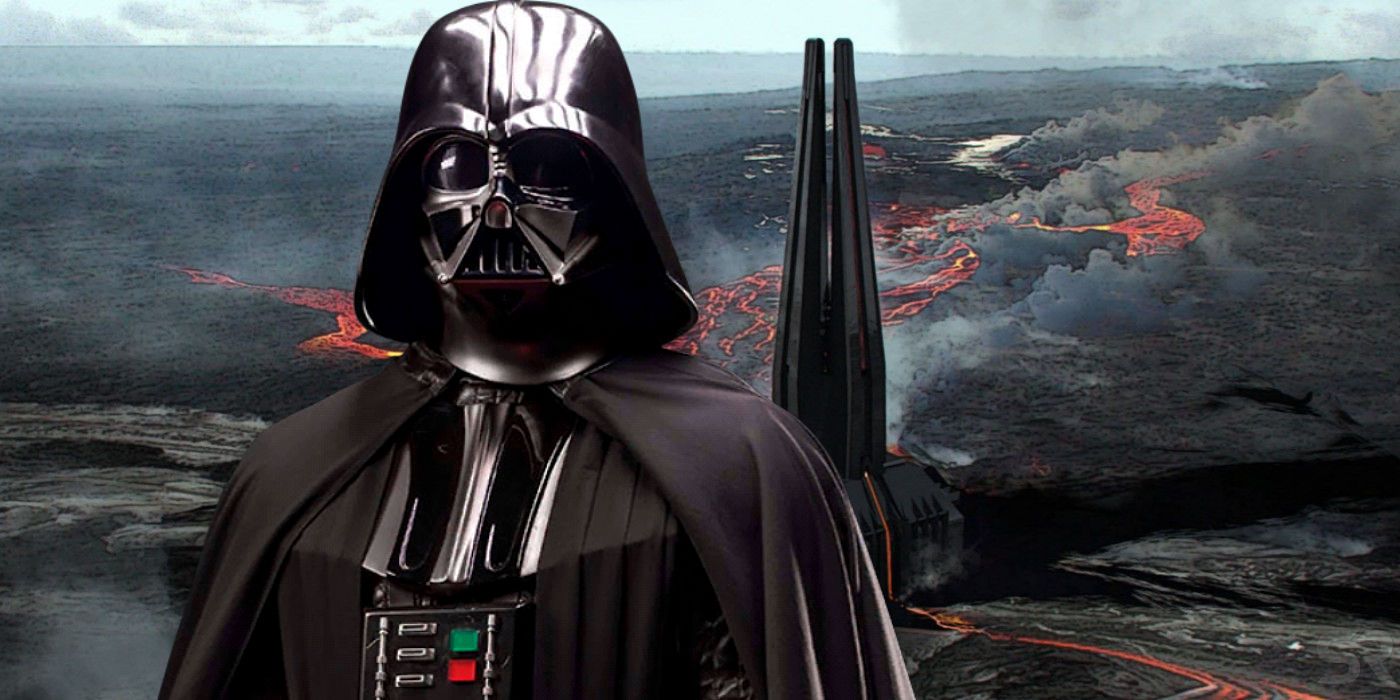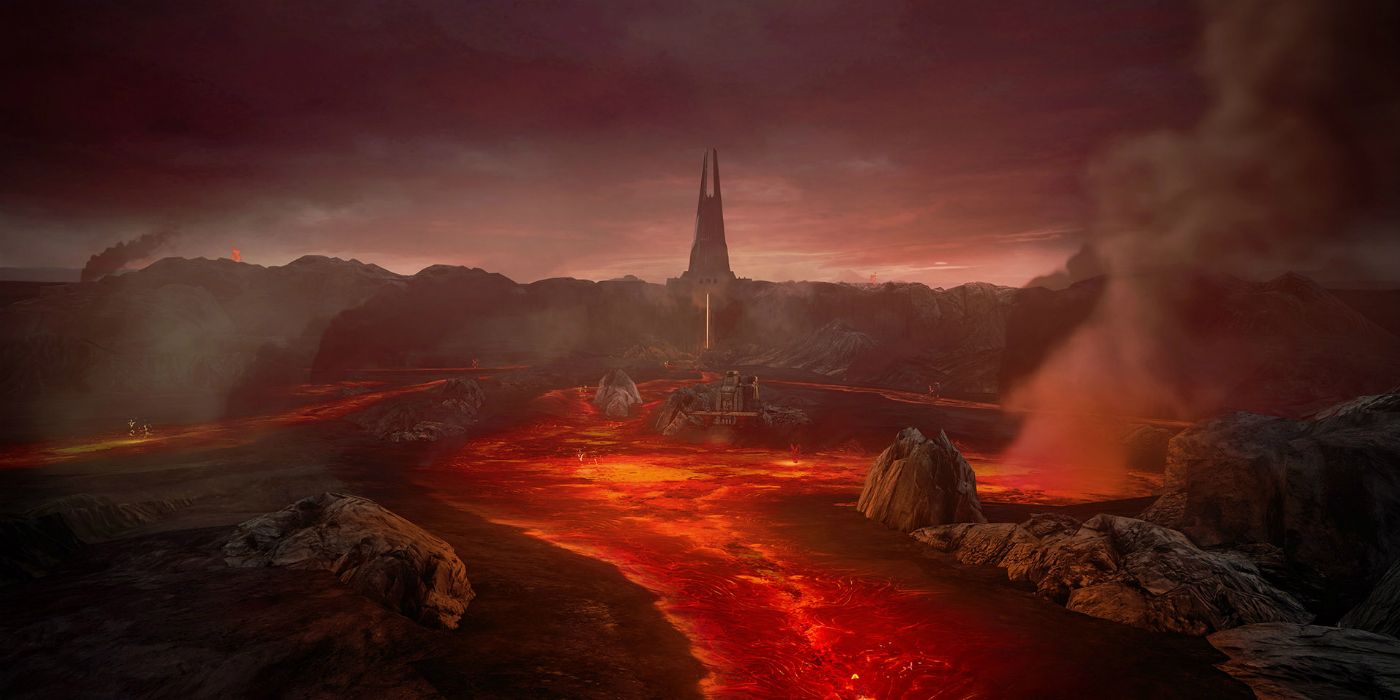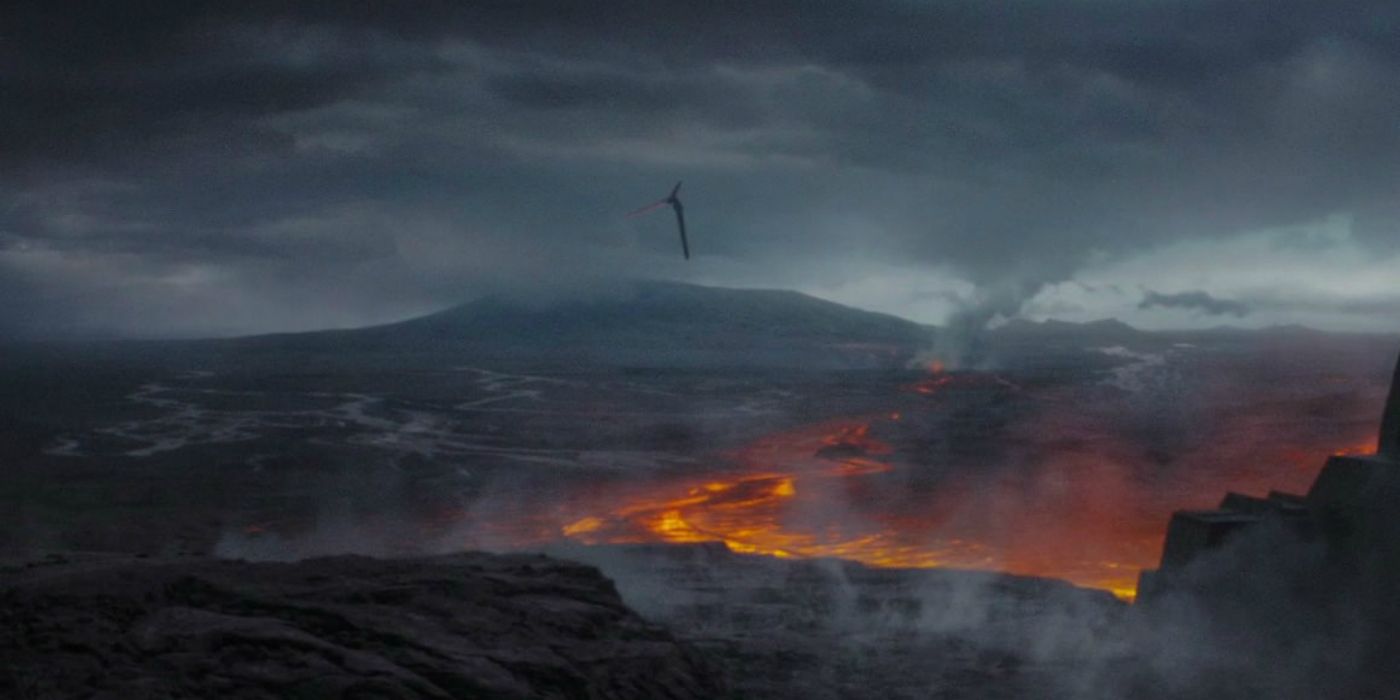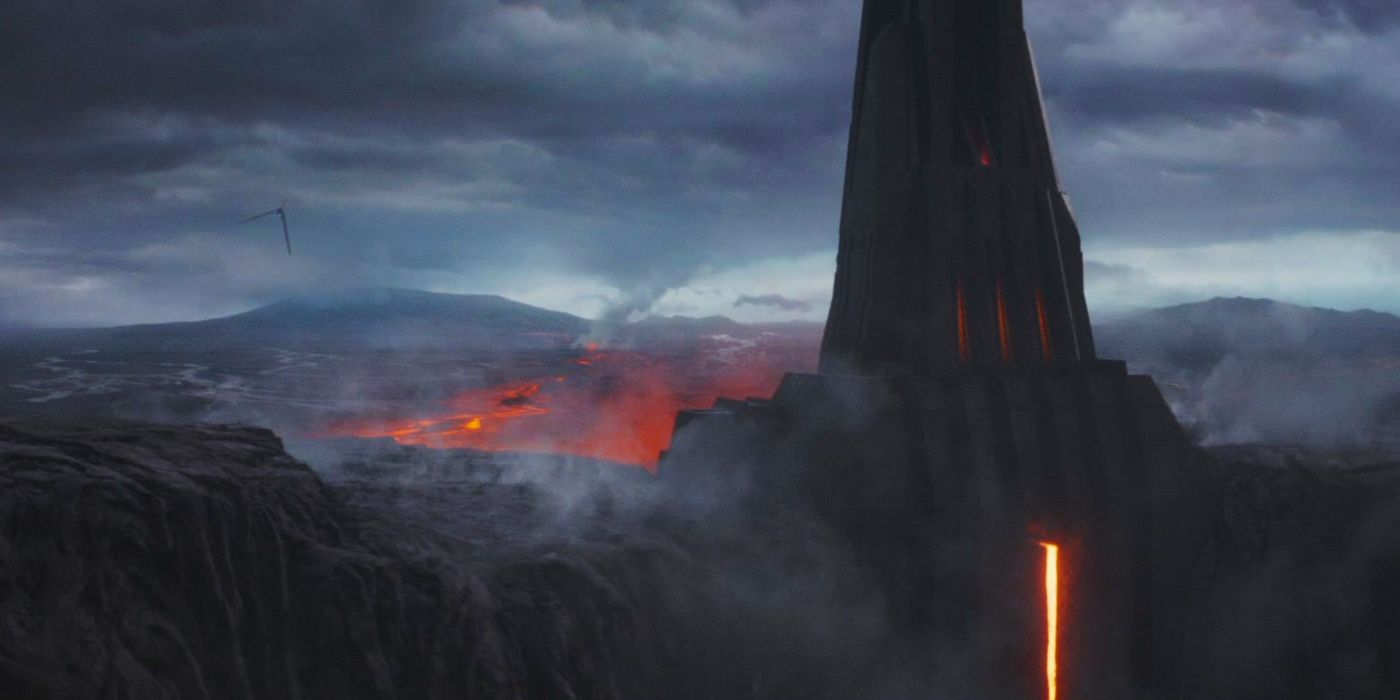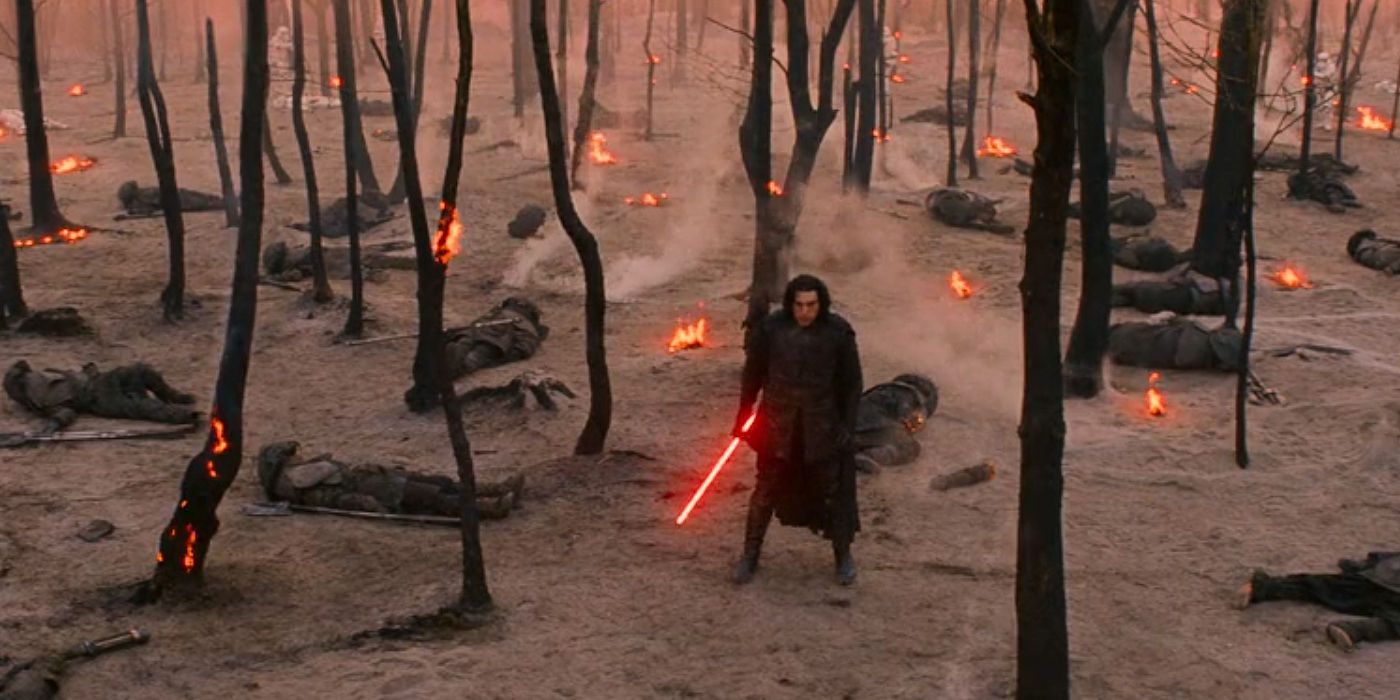Star Wars has gradually revealed the history of Mustafar, the lava planet Darth Vader called home. The planet Mustafar was introduced in Star Wars: Episode III - Revenge of the Sith, when Palpatine sent Anakin Skywalker there to slaughter the Separatist leaders. It became the site of the final, climactic duel between Anakin and his old master Obi-Wan Kenobi, and Anakin was left crippled, barely surviving the defeat he suffered at Mustafar. He was transformed into the brooding, shadowy figure of Darth Vader.
It's become increasingly clear that Mustafar is somehow important to the Star Wars saga. Indeed, The Clone Wars stepped back in time a few years, revealing Anakin had visited Mustafar before; Palpatine had been kidnapping Force-sensitive children from across the galaxy, and he had established a secret base on Mustafar to indoctrinate them into becoming servants of the Sith. In Rogue One: A Star Wars Story, audiences learned Darth Vader had returned to Mustafar and claimed it as his home.
In the Disney era, Star Wars is different to any other franchise in that every medium is considered equally canon. The story of the Star Wars galaxy is overseen by the Lucasfilm Story Group, who coordinate reveals in comics, novels, and games, as well as in the films themselves. And the story of Mustafar is one of their greatest successes, because it has been told across almost all these diverse mediums.
How Mustafar Became A Volcanic Wasteland
The tragic history of Mustafar was revealed in Oculus VR's Vader Immortal game. In ancient times, countless millennia ago, Mustafar had been a planet rich in life, ruled over by a woman called Lady Corvax. Unfortunately, the Sith attacked Mustafar; although the Mustafarians drove the invaders back, Lady Corvax suffered a personal blow when her husband died defending the planet. Driven insane with grief, Lady Corvax obtained what appears to be a massive Kyber Crystal called the Brightstar, which was tied to all life on the planet. She performed a forbidden ritual to tap into the Brightstar's energies in an attempt to resurrect her husband, sacrificing the life of the entire world in the attempt. Something went wrong; the process was somehow interrupted when it was only partly complete, and as a result all that sacrifice was in vain, because Lady Corvax's husband was restored as a wraith-like creature.
Mustafar's Role In Star Wars' Galactic History
The Sith returned to Mustafar, and learned a powerful nexus of the dark side had been created by Lady Corvax's madness. As a result, Mustafar appears to have become a site of pilgrimage for them, with Sith Lords returning time and again in order to delve deeper into the mysteries of the dark side. Meanwhile, the volcanic processes of Mustafar created rare and exquisite gemstones, which became a prized commodity across the galaxy. Hundreds of years before the events of Star Wars: Episode I - The Phantom Menace, the Techno Union established mining facilities on Mustafar, protecting them from the intense heat of the lava flows with powerful energy shields. Darth Sidious used one of these mining installations during the Clone Wars, when he established an indoctrination center for young Force-sensitives on Mustafar; it was destroyed by Anakin Skywalker and his Padawan, Ahsoka.
Darth Vader & Mustafar
Darth Sidious sent the Separatist leaders to Mustafar at the end of the Clone Wars, as part of his plans to bind Anakin Skywalker to the dark side once and for all. The newly-christened Darth Vader was sent to kill them all, and he accomplished his mission, finally bringing an end to the Clone Wars. But he had been pursued there by his beloved Padmé, and Obi-Wan Kenobi had hidden himself on Padmé's ship. In his anger, Darth Vader killed Padmé in a fit of rage, before losing in a duel with Obi-Wan. The Emperor was barely able to save his apprentice's life, but Vader's body was left crippled.
According to Charles Soule's Darth Vader series, Palpatine then commanded his apprentice to make Mustafar his home. No doubt Palpatine quite enjoyed the idea of having Darth Vader live at the site of his greatest defeat, wallowing in his guilt and pain. But the Emperor also hoped Vader would learn to tap into the dark side at the nexus, to become strong in the Force once again in spite of the critical injuries he had suffered at Obi-Wan's hands. The Emperor even teased Vader with a hint of life after death, because he gave him the mask of the ancient Sith Lord Darth Momin, who had transferred his spirit into his helmet.
Momin's spirit was able to use the nexus in order to resurrect himself, and Darth Vader sensed this could be the key to restoring Padmé too. He learned the ancient history of Mustafar, and attempted to use the Brightstar, but he soon discovered the ancient ritual needed to be performed by one of Lady Corvax's ancestors. Darth Vader came within a hair's breadth of success in the Vader Immortal game - but he was defeated, and the Brightstar was destroyed. Its energy flooded back into Mustafar, beginning a millennia-long process of restoration to the volcanic world, with the dark side in retreat at last. It's possible Darth Vader's continued meditations at Mustafar unwittingly opened him up to the restorative power of the light side of the Force, beginning the process of his own redemption.
Mustafar In The Star Wars Sequel Trilogy
Mustafar returned in Star Wars: The Rise of Skywalker, decades after Darth Vader's death, and the planet was subtly changed. By this time, Mustafar had become a site of pilgrimage to Force cults who venerated the memory of Darth Vader, and one such cult - the Alazmec of Winsit - dedicated themselves to safeguarding treasures retrieved from Vader's Tower. Pursuing his grandfather's lost Sith Wayfinder, Kylo Ren traveled to Mustafar, and cut a bloody swathe through the Alazmec of Winsit. The novelization expands upon this scene, revealing the Wayfinder was guarded by a last servant of Darth Vader himself who still lived on the fiery planet, a monstrous being called the Eye of Webbish Bog. The creature lived in an area where life was returning, named Corvax Fen after the Lady Corvax. The scene was cut, but it's still considered canon after appearing in Rae Carson's novelization, which means the legacy of Darth Vader lives on at Mustafar.
The story of Mustafar is a fascinating one, told in all the different mediums employed by Lucasfilm. It is remarkably consistent, with all the different strands tying together into a single ongoing narrative. As such, while Lucasfilm is often rightly criticized for poor planning when it comes to the sequel trilogy, in this particular case they've done a tremendous job - and demonstrated the phenomenal potential of a transmedia franchise.

